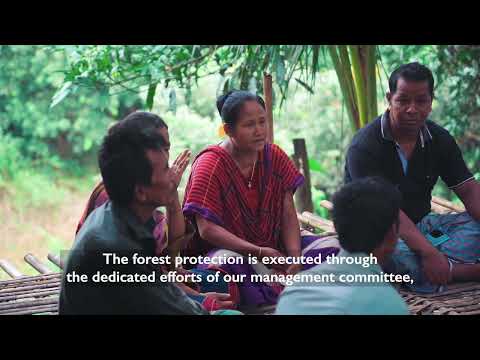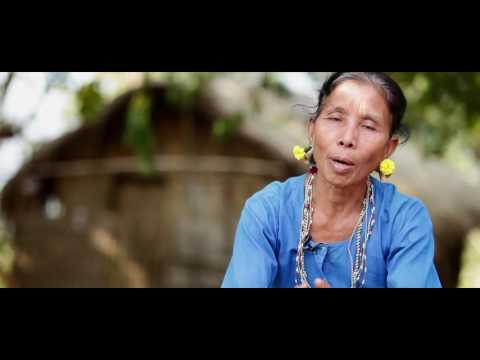Exploring The Enchanting Beauty Of Chittagong Hill Tracts

Are you yearning for a unique travel experience filled with breathtaking landscapes, rich history and diverse cultures? Allow us to introduce you to the Chittagong Hill Tracts, an enchanting region in southeastern Bangladesh renowned for its stunning natural beauty.
Our guide will paint a captivating picture of this region’s mesmerizing vistas, traditional tribes and adventurous activities that await your exploration. Ready for the journey of a lifetime? Dive right in!
Key Takeaways
- The Chittagong Hill Tracts in Bangladesh offer stunning landscapes, diverse cultures, and a rich history for travelers to explore.
- The region has a unique geography with low hills made of soft rocks, adding to the natural beauty of the area.
- Eleven different tribes live in the Chittagong Hill Tracts, each with its own language and traditions.
History of Chittagong Hill Tracts

Chittagong Hill Tracts have a rich history, shaped by geography, demography, and British rule.
Geography
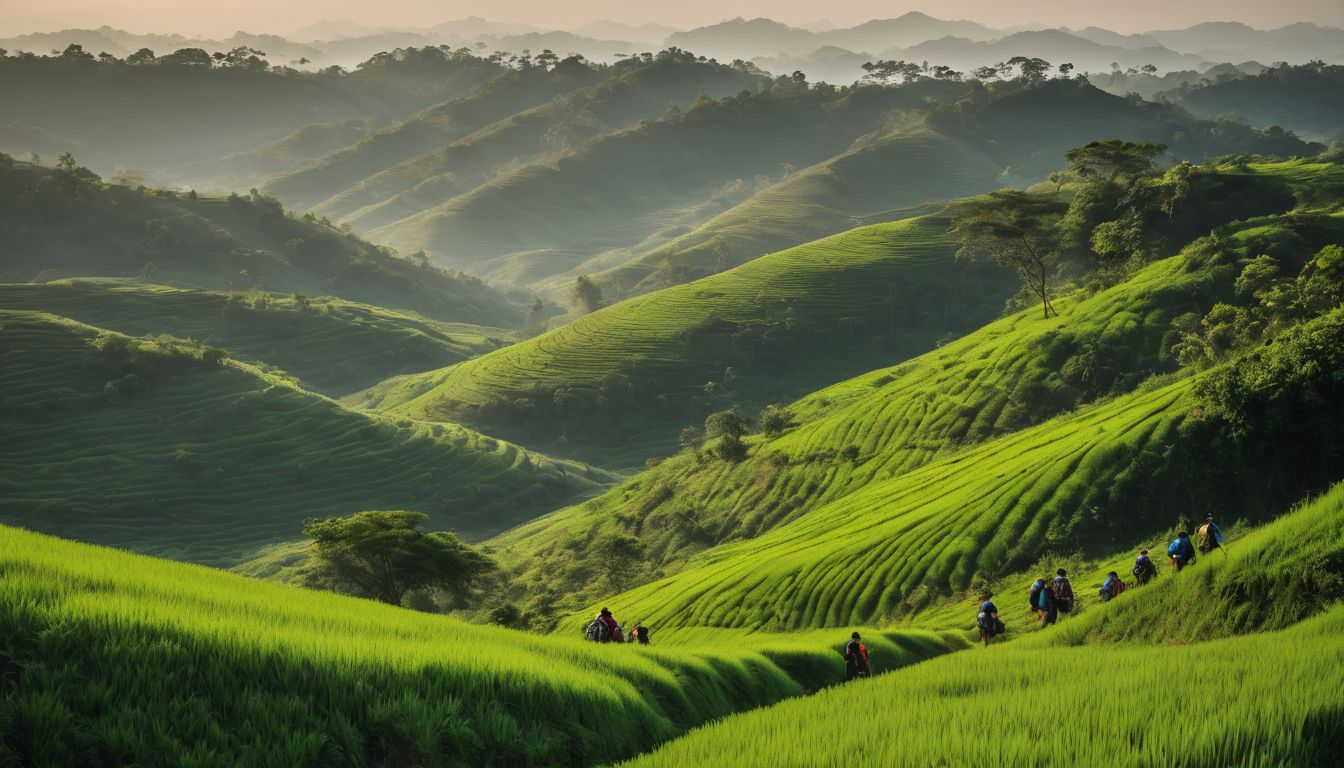
The Chittagong Hill Tracts sit in the far southeast of Bangladesh. It is the only hilly area in this country. You can find low hills made of soft rocks here, mainly clay and shale.
The look of these hills adds to the beauty of the natural landscape. This mountainous place has many special geological features to see up close!
Demography
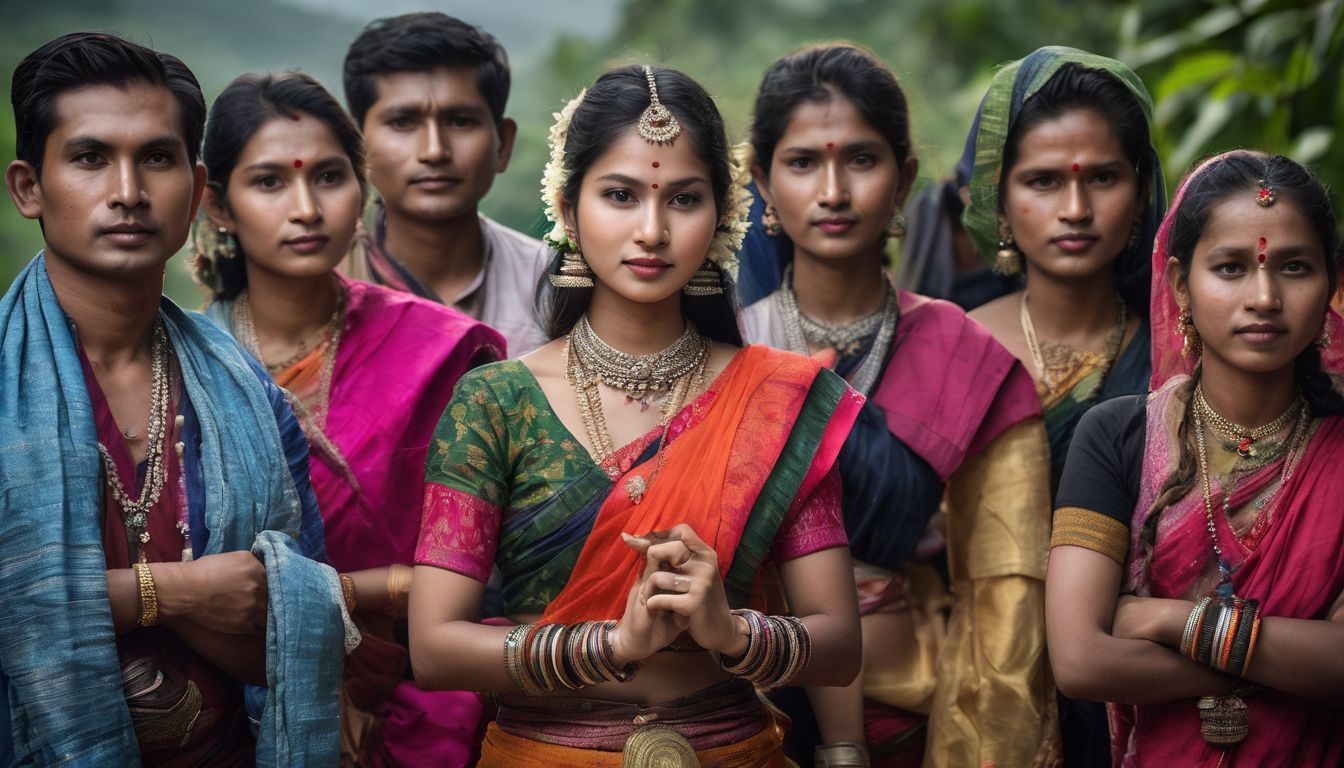
People from many places live in Chittagong Hill Tracts. Many came here from Burma Arakan as refugees. Today, it has people from many tribes and cultures.
Some of these people are Jumma. They are not just one group but 11 different ones. Each tribe speaks its own language and follows unique traditions. But the area is also growing fast with others moving here too, mostly from Bengal’s lowlands!
British rule
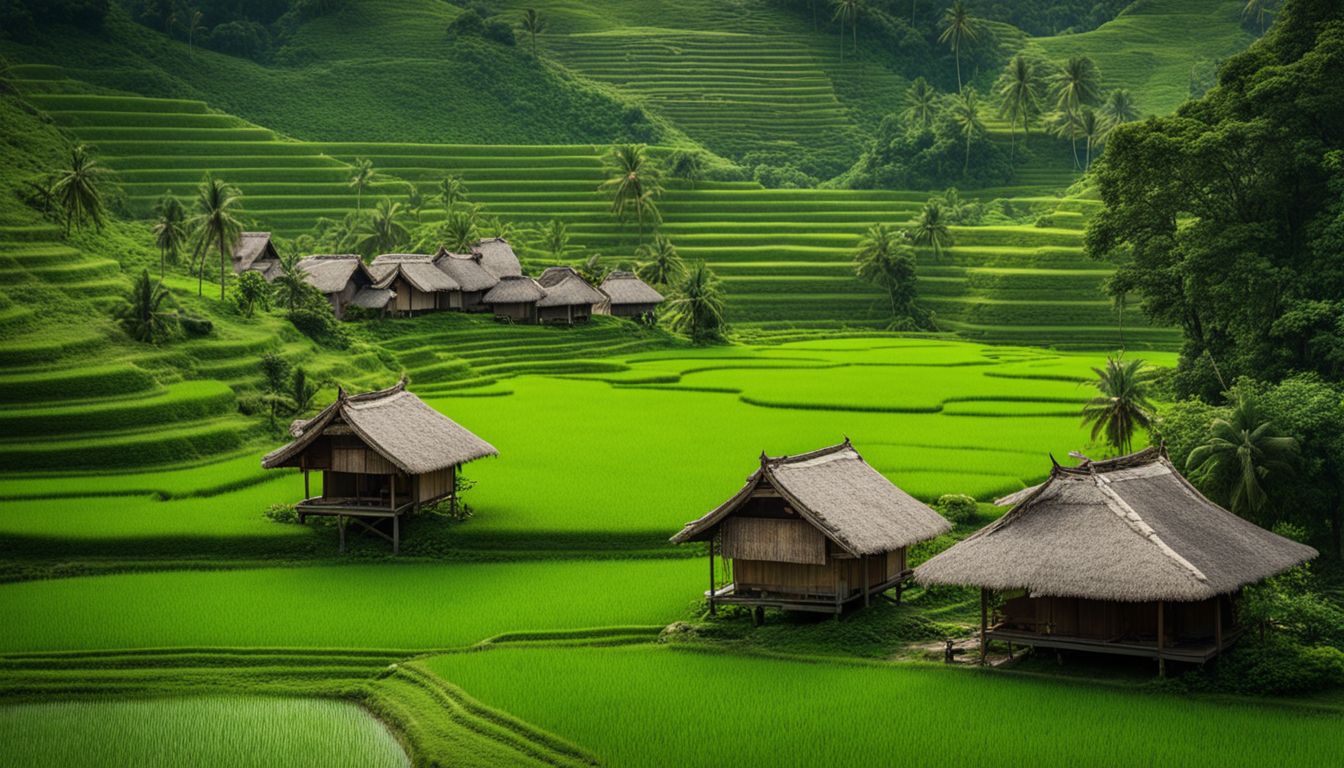
The British took over the Chittagong Hill Tracts in 1860. They made it a part of Bengal, their large area in India. This started life under British rule for the people living there.
For many years, they were part of Bengal. But then, at the end of the 19th century, things changed again. The British carved out a new district from Bengal and named it “Chittagong Hill Tracts”.
This move led to many fights in this region later on. During that time, people living here faced hard times because of how the British ruled over them.
End of British rule

After being under British rule for many years, the Chittagong Hill Tracts saw the end of British control in 1947. This marked a significant milestone for the region, as it was no longer governed by foreign powers.
However, the effects of British colonization were deeply felt and continue to shape the Chittagong Hill Tracts today. The people of this region have faced exploitation and challenges since that time, leading to conflicts and tensions that still exist today.
Despite these challenges, efforts have been made to bring peace through initiatives like the Chittagong Hill Tracts Peace Accord in 1997.
Conflict

In Chittagong Hill Tracts, a region of mesmerizing beauty and diverse culture, the conflict has shaped its history. Experience the resilience and triumph of its people in the face of adversity.
Read more to uncover the complex background, insurgency, and recent developments that have left an indelible mark on this enchanting land.
Background

The Chittagong Hill Tracts conflict is a political and armed conflict between the government of Bangladesh and the Parbatya Chattagram Jana Samhati Samiti (PCJSS). The conflict started because the Pahari people, who are indigenous to the region, have been demanding greater autonomy.
This has led to tensions and armed struggles in the area. The Chittagong Hill Tracts region has a unique Buddhist culture and is located on the borderlands between South Asia and Southeast Asia.
The conflict has been ongoing since 1976, with regional tensions and disputes over land rights adding to the unrest.
Insurgency

Insurgency in the Chittagong Hill Tracts was a result of political and armed conflict between the government of Bangladesh and the Parbatya Chattagram Jana Samhati Samiti rebel group.
The Pahari people, who wanted greater autonomy for their region, were at the center of this rebellion. Lasting over a decade, the insurgency led to around 70,000 indigenous people becoming refugees in India’s Tripura state.
This situation created significant challenges for both sides involved in the conflict.
Detention

People in the Chittagong Hill Tracts area have often been arrested and held in custody due to suspicions of being involved with the Shanti Bahini or assisting them. This has led to cases of detention, where people are forcefully taken away by the military or law enforcement.
Sadly, during this conflict, there have been reports of torture and even unlawful killings carried out by security forces. These human rights violations go against international standards and are a breach of basic rights.
Recently, an indigenous activist named Milon was detained and tragically died while in military custody in the Dighinala sub-district of Chittagong Hill Tracts.
Recent Developments

The government in Chittagong Hill Tracts has taken measures to address the conflict and promote peace through a peace accord.
Government reaction
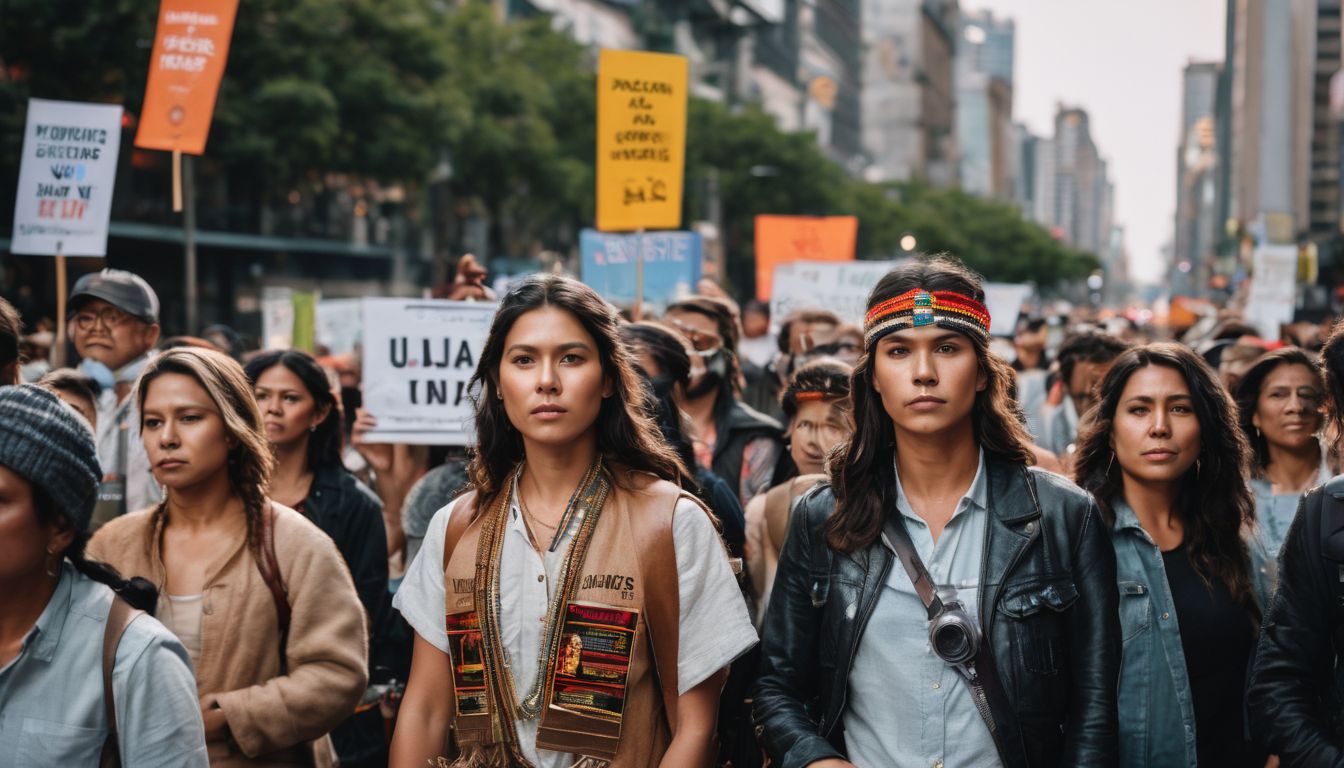
The government of Bangladesh has been involved in a political and armed conflict with the Parbatya Chattagram Jana Samhati Samiti (PCJSS) in the Chittagong Hill Tracts region. The government’s reaction to this conflict has included military intervention and detention of individuals associated with the PCJSS.
This has led to human rights violations and tensions between the indigenous communities and the government. In 1997, a peace accord was signed between the government and PCJSS, aimed at resolving the dispute and protecting indigenous rights.
However, there have been concerns about the non-implementation of this accord, leading to ongoing political unrest in the region. A UN expert has expressed concern regarding these issues and highlighted the need for effective dispute resolution mechanisms to address ethnic tensions in Chittagong Hill Tracts.
Peace accord
The Peace accord, signed on 2 December 1997, brought an end to the long-standing conflict in the Chittagong Hill Tracts region. It aimed to recognize the rights of the indigenous peoples and tribes in the area.
The accord devolved powers from the Government to the CHT Tribal Councils, allowing for greater autonomy and participation in decision-making processes. Implementation began in 1998, and it was seen as a milestone for peace and development for the Indigenous Peoples of the Chittagong Hill Tracts.
Life in Chittagong Hill Tracts

The life in Chittagong Hill Tracts revolves around the diverse ethnic minorities residing in the region, who maintain their traditional lifestyles and customs amidst the natural beauty of the hills and forests.
Ethnic minorities in the region
The Chittagong Hill Tracts is home to eleven ethnic groups, each with its own unique culture and traditions. The two main ethnic groups in the region are the Chakmas and the Marmas.
These indigenous communities have been living in harmony with their ancestral ways of life for centuries. They have a strong sense of cultural identity and take pride in preserving their ethnic diversity.
A health survey conducted in the area revealed valuable insights into the health-seeking behavior of these indigenous populations, highlighting their cultural heritage and resilience.
Traditional lifestyle and customs
The traditional lifestyle and customs in Chittagong Hill Tracts are rich and diverse. The region is home to more than ten different ethnic and indigenous groups, each with its own unique cultural traditions.
These tribes have their own dialects, distinctive dress, rites, and rituals that have been passed down through generations. Their traditional clothing is colorful and vibrant, reflecting the ethnic diversity of the area.
Rituals and ceremonies play an important role in their daily lives, celebrating events like harvests or births. Despite the differences between these tribes, there are strong cultural and social bonds that connect them all together in this enchanting part of Bangladesh.
In addition to preserving their cultural heritage, the people of Chittagong Hill Tracts also embrace a life closely tied to nature. Living amidst stunning natural landscapes, they have developed a deep understanding of the environment around them.
They engage in sustainable land use practices and respect for wildlife conservation. This connection with nature can be seen in their traditions as well – from dances inspired by animals to songs praising the beauty of their surroundings.
Exploring this region will give you a glimpse into these unique customs while immersing yourself in breathtaking scenery that has remained largely untouched by modern development.
Land use and environmental issues
The Chittagong Hill Tracts face significant land use and environmental issues. Soil erosion and forest degradation have become common problems, leading to the deterioration of the region’s natural resources.
This has a negative impact on resource management and land use patterns in the area. Deforestation is also occurring, which is further contributing to land degradation. These challenges affect not only the environment but also the livelihoods of the local communities who rely on agriculture for their sustenance.
Additionally, human rights violations have been reported in relation to these issues, highlighting the need for sustainable solutions that address both environmental conservation and social justice concerns.
Exploring the Enchanting Beauty

The Chittagong Hill Tracts offer mesmerizing landscapes, from lush hills and winding rivers to serene lakes. The region boasts diverse flora and fauna, providing an enchanting experience for nature lovers.
Cultural and historical sites add depth to the exploration of this stunning destination.
Scenic landscapes and nature
Chittagong Hill Tracts is blessed with beautiful landscapes and enchanting natural beauty. The region is famous for its lush forests, pristine beaches, and breathtaking views. Rangamati, one of the districts in the Chittagong Hill Tracts, offers picturesque scenery with its lush hills, flowing valleys, and clear lakes.
These untouched landscapes provide a serene environment that attracts nature lovers and adventure seekers alike. If you visit this scenic destination, you can explore the stunning beauty of the hills, valleys, lakes, and enjoy a truly immersive experience in nature’s embrace.
Indigenous flora and fauna
The Chittagong Hill Tracts region in Bangladesh is known for its enchanting natural beauty and rich biodiversity. The area is home to a diverse range of indigenous flora and fauna, adding to its allure.
The indigenous flora includes various species of trees, shrubs, and plants that are unique to the region. These indigenous species contribute to the overall biodiversity of the area and play a crucial role in maintaining the ecological balance.
On the other hand, the indigenous fauna found in this region consists of different species of birds, mammals, reptiles, and amphibians. Exploring the Chittagong Hill Tracts gives nature enthusiasts an opportunity to witness these vibrant ecosystems firsthand while immersing themselves in stunning landscapes filled with captivating wildlife.
Cultural and historical sites
Chittagong is a city that is rich in cultural and historical sites. These sites are a testament to the city’s vibrant past and architectural wonders. From ancient temples to British colonial-era buildings, there is so much to explore and learn from.
The bustling port of Chittagong also adds to its historical significance, as it has been an important trading hub for centuries. So, when you visit Chittagong, make sure to take the time to explore these heritage sites and witness the cultural diversity that makes this city truly enchanting.
Adventures and Activities
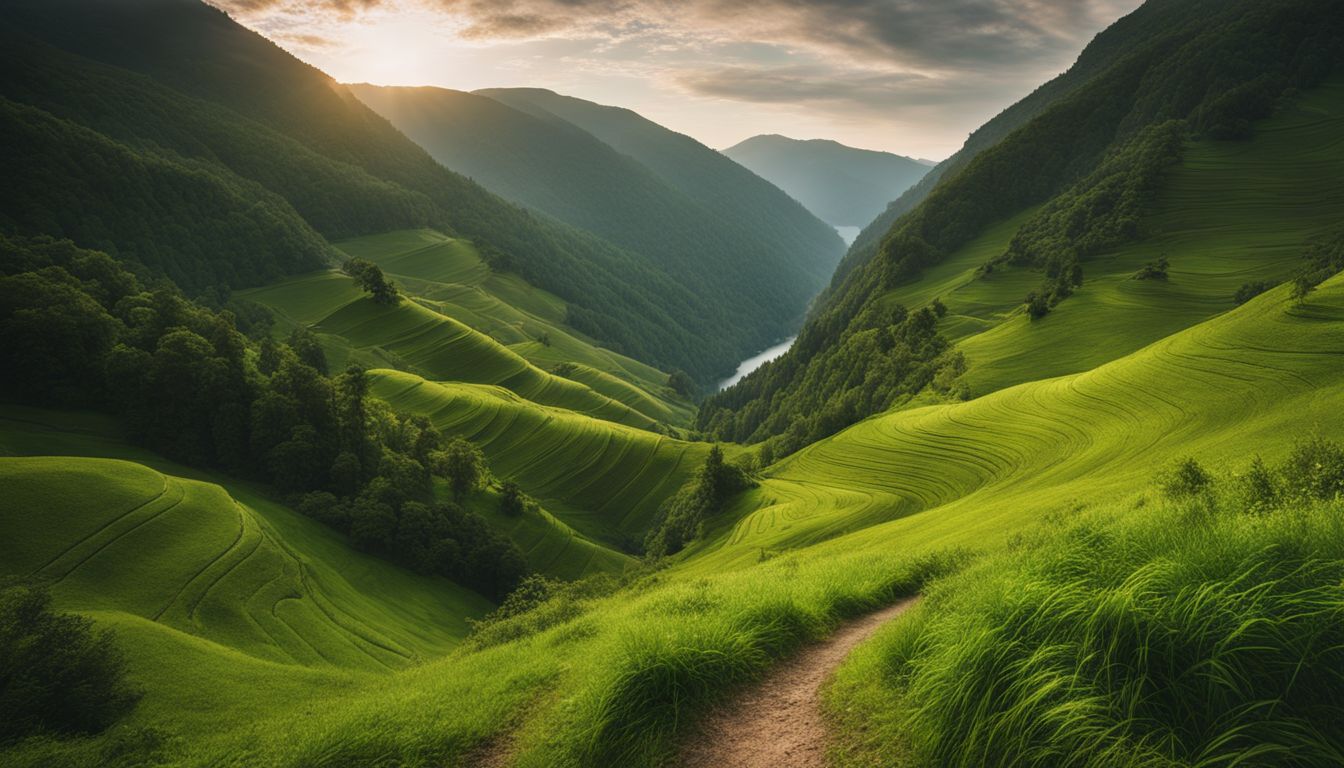
Experience the thrill of hiking and trekking through the lush hills, embark on exhilarating river rafting adventures, and go on awe-inspiring wildlife safaris in Chittagong Hill Tracts.
Read more to discover the exciting activities that await you in this enchanting region of Bangladesh.
Hiking and trekking
Hiking and trekking in Chittagong Hill Tracts offer exciting outdoor adventures and the chance to explore nature’s wonders. The mountain trails provide stunning views of scenic landscapes, making it a paradise for nature lovers.
As you hike through the hills, you’ll encounter diverse flora and fauna that add to the beauty of your journey. But it’s not just about the scenery – hiking in Chittagong Hill Tracts also allows you to immerse yourself in the local culture.
You can meet tribal communities along the way and learn about their customs and traditions. It’s an unforgettable experience that combines adventure with cultural immersion.
River rafting
River rafting in Chittagong Hill Tracts is an exhilarating adventure activity that will get your heart racing. The region is home to the stunning Sangu River, which offers thrilling rapids for both beginners and experienced rafters.
With its crystal-clear waters and breathtaking natural surroundings, it’s the perfect spot for some water-based fun.
To embark on a river rafting adventure, you can hire local transportation or a guide in Bandarban. They will take you to the starting point of your expedition where you’ll be equipped with all the necessary gear.
Then, get ready to paddle through the rapids, feeling the rush of adrenaline as you navigate through twists turns and turbulent waters.
As you conquer each rapid on your rafting journey, take a moment to appreciate the beauty of nature around you. The lush green hills and dense forests provide a picturesque backdrop for your thrilling experience.
Don’t forget to bring along a waterproof camera to capture those unforgettable moments.
Wildlife safaris
Embark on an exciting wildlife safari in the Chittagong Hill Tracts and immerse yourself in the enchanting beauty of this region. These safaris offer a chance to explore the diverse flora and fauna that call this area home.
Trek through forest trails, spotting various species of wildlife along the way. From majestic elephants to colorful birdlife, there is so much to discover. Don’t forget your camera as you capture unforgettable moments during wildlife photography tours.
It’s an adventure-filled experience that allows you to appreciate the natural wonders of the Chittagong Hill Tracts up close and personal.
Local Cuisine and Culture

Indulge yourself in the flavors of traditional food and drinks while immersing in the vibrant music and dance performances of the local culture.
Traditional food and drinks
The traditional food and drinks of the Chittagong Hill Tracts in Bangladesh are a major part of its cultural heritage. When exploring this enchanting region, make sure to try out the local delicacies and experience the flavors of authentic cuisine. Here are some native dishes and traditional recipes you should not miss:
- Indigenous Flavors:
- Enjoy dishes made with bamboo shoots, wild mushrooms, and herbs unique to the region.
- Taste the distinct flavors of fermented fish and dried fish preparations.
- Regional Specialties:
- Try “Pusas,” which are rice dumplings stuffed with savory fillings like meat or vegetables.
- Savor the flavors of “Chittagong Hilsha Curry,” a spicy fish curry made with Hilsha, a popular local fish.
- Traditional Cooking Methods:
- Discover the unique technique of cooking inside bamboo tubes, called “Paturi,” which imparts a smoky aroma to the food.
- Experience “Bhapa Pitha,” a type of steamed cake made from rice flour and flavored with jaggery or coconut.
- Local Culinary Heritage:
- Learn about traditional cooking techniques passed down through generations by indigenous communities.
- Explore the use of spices like turmeric, ginger, mustard seeds, and chili peppers in their dishes.
- Cultural Gastronomy:
- Attend local food festivals and fairs to indulge in a variety of traditional foods prepared by skilled village cooks.
- Immerse yourself in the vibrant culinary traditions that reflect the rich cultural diversity of Chittagong Hill Tracts.
Music and dance performances
Music and dance performances are an integral part of exploring the enchanting beauty of Chittagong Hill Tracts.
Responsible Tourism
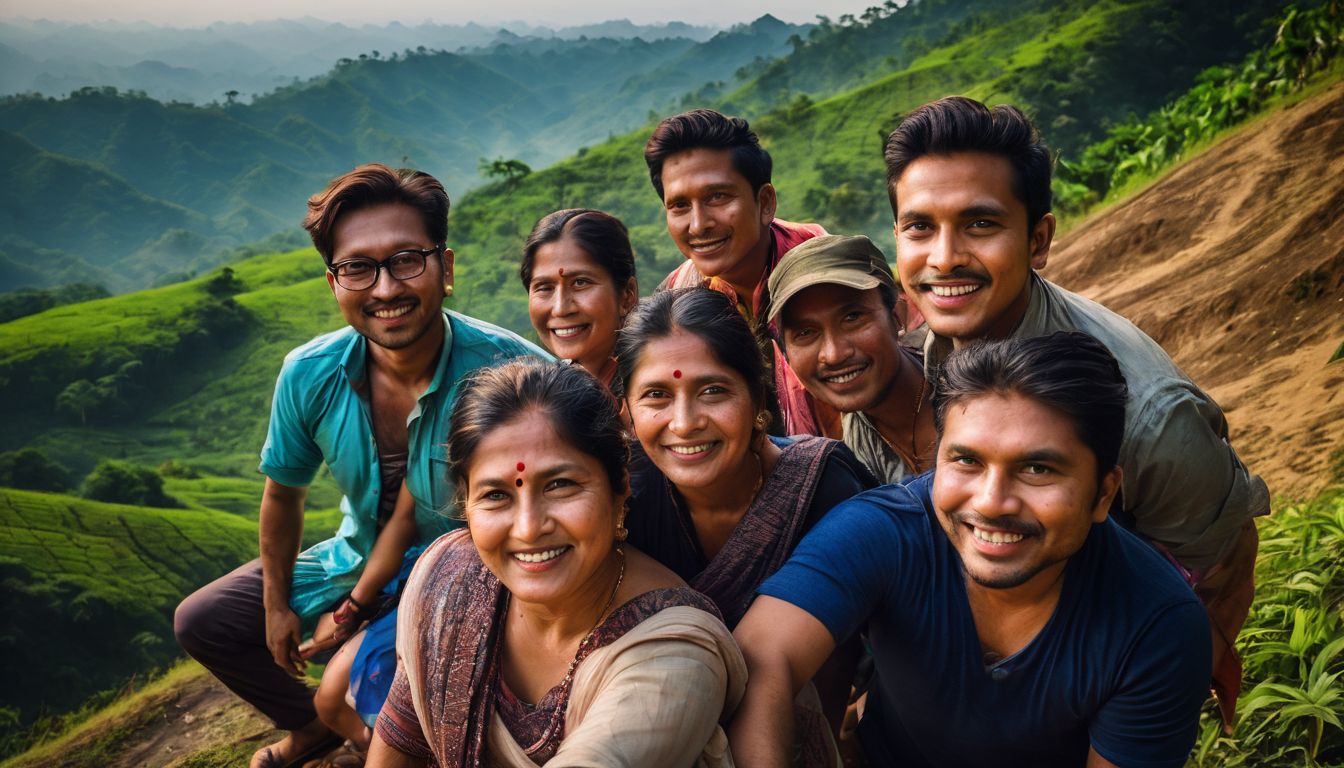
Support local communities and practice sustainable travel to ensure the long-term preservation of the Chittagong Hill Tracts’ natural beauty and cultural heritage.
Supporting local communities
Responsible tourism initiatives in the Chittagong Hill Tracts focus on supporting and uplifting local communities. By promoting community-based tourism, these initiatives aim to generate income and reduce poverty among the local population.
This approach allows for economic opportunities to be created within the region, ensuring that the benefits of tourism are shared with those who call it home. It also helps to preserve and celebrate the unique cultural heritage of the ethnic minorities living in the area.
Through community engagement and social responsibility, responsible tourism plays a vital role in fostering sustainable development while protecting both the environment and local way of life.
Sustainable travel practices
Sustainable travel practices are essential for responsible tourism. They focus on minimizing negative impacts on the environment and local communities. By supporting local economies and communities, sustainable travel helps to preserve natural and cultural heritage.
Visitors can enjoy an unforgettable experience while also reducing their ecological footprint. Furthermore, responsible travel practices play a crucial role in conserving endangered animals and natural resources.
In the Chittagong Hill Tracts region, Rangamati offers opportunities for sustainable travel and responsible tourism initiatives that promote eco-friendly travel, community-based tourism, and environmental conservation.
Conclusion

In conclusion, a trip to the Chittagong Hill Tracts is an opportunity to immerse yourself in the enchanting beauty of this region. With its stunning landscapes, diverse cultures, and rich history, it offers a unique and captivating experience for travelers.
So pack your bags and get ready to explore the mesmerizing natural attractions and authentic local experiences that await you in the Chittagong Hill Tracts.
FAQs
1. Where are the Chittagong Hill Tracts located?
The Chittagong Hill Tracts are located in southeastern Bangladesh.
2. What makes the Chittagong Hill Tracts enchanting?
The Chittagong Hill Tracts are known for their picturesque landscapes, lush green hills, breathtaking waterfalls, and diverse tribal cultures.
3. How can I explore the beauty of the Chittagong Hill Tracts?
You can explore the beauty of the Chittagong Hill Tracts by going on guided hikes or treks, visiting local villages and markets, experiencing traditional tribal festivals, and enjoying boat rides along rivers and lakes.
4. Are there any accommodations available in the Chittagong Hill Tracts?
Yes, there are various accommodations available in the Chittagong Hill Tracts ranging from resorts to guesthouses that offer comfortable stays amidst nature.
5. When is the best time to visit the Chittagong Hill Tracts?
The best time to visit the Chittagong Hill Tracts is during winter (November to February) when temperatures are mild and rainfall is low, making it ideal for outdoor activities and sightseeing.

